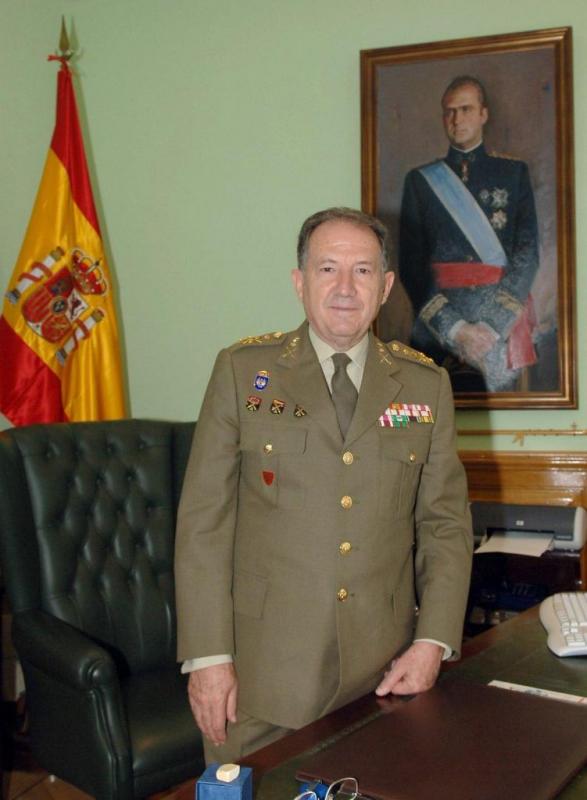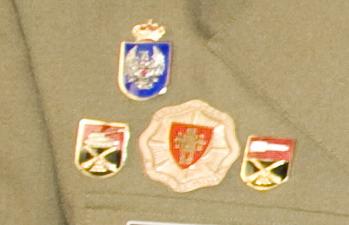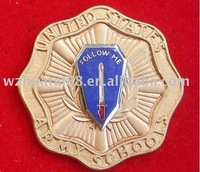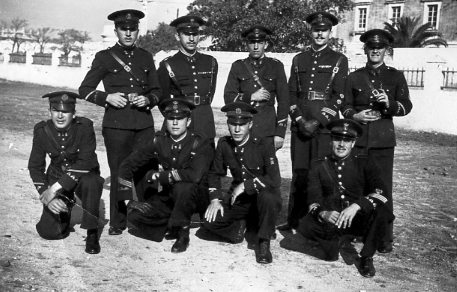
Panzerpionier
-
Posts
127 -
Joined
-
Last visited
Content Type
Profiles
Forums
Blogs
Gallery
Events
Store
Posts posted by Panzerpionier
-
-
Dear Dave
4 hours ago, Dave Danner said:There probably is not a primary source since it was apparently a de facto policy. If you want a secondary source, Nimmergut states in Deutsche Orden und Ehrenzeichen: 1800-1945:
Für den Erwerb des Pour le Merite war das Ritterkreuz mit Schwertern des Hausordens von Hohenzollern Voraussetzung. Für diese Handhabung des Militärkabinetts liegt jedoch keine Ordre vor. Von dieser Regelung gibt es zahlreiche Ausnahmen, erinnert sie hier nur an Schörner und Rommel, die späteren Generalfeldmarschälle, an Kapitänleutnant Otto Weddigen oder Leutnant Otto von der Linde.
 That quote should be enough to support my point. Thanks a lot!
That quote should be enough to support my point. Thanks a lot!
On the other hand, I have a copy of 2005/2006 edition of Nimmergut's catalog Deutsche Orden und Ehrenzeichen: 1800-1945, but as it has no text at all, only pictures amd prices, I understand that you refer to a different book. Could yo provide a more complete reference for locating a copy of the book?
Thanks in advance
0 -
Thannk you very much for your replies, which are very interesting and helpful.
I forgot to specify that the sourde I read stated specifically that crosses of Royal House Order of Hollenzollern were awarded de facto as an intermediate step between Iron Crosses and Order Pour le Merite, i.e. there was no formal requirement (regulation) about it, but it actually happened that way.
Dave says that generals and colonels acting as brigade commanders usually received the Crown Order with Swords and/or the Red Eagle Order with Swords before being considered for the Pour le Merite, some of them higher grades of the Royal House Order of Hollenzollern. That seems to support the theory that an intermediate order was awarded between the Iron Cross and the Pour le Merite, albeit diferent orders were awarded depending of the rank of the recipient.
Is there any source that could be cited in this way? O'Connor's "Aviation Awards..." series seens too specific, and Werner Voss example seems too specific to be considered a factual pattern. On the other hand, I have Neville's "Medal Ribbons & Orders of Imperial Germany & Austria", but it seems to be too basic and lacks information about award criteria and figures.
Thanks again for your help and support
0 -
Dear sirs
I just read elsewhere (Wikipedia IIRC) that crosses of Royal House Order of Hollenzollern were awarded as an intermediate step between Iron Crosses and Order Pour le Merite. Unfortunately, no source for that statement was provided. That piece of data would be very useful for muy current research. Could you confirm it? Is there any reliable source (book) supporting that statemenent and that could be cited? Language is no problem.
Thanks in advance for your help and support
0 -
Thank you very much for your help - Sorry for the late reply.
It seems that both the "big" and the "abbreviated" form are used by foreign graduates:

(Click on picture to enlarge)

Each picture corresponds to a different Spanish Army officer graduated from the United States Army Field Artillery School.
0 -
Hi folks
What are these badges intended for (instructors, alumni, graduates...)?
They seem to be composed by the shield of an US Army School placed on top pf a common back "shield":
US Army Military Police School:

US Army Infantry School:

US Army Ordnance School:

Thanks in advance
0 -
Hi,
Here is one nice ribbon bar what belonged to the capitan Tirso de La Cal Diez, who was Blue Division priest. Nice to see EK2 and Wintercampaign end of the bar. Actually it is my very FIRST bar where the EK is not in the first place!
If anyone here knows more about Mr. Diez, please let me know.
The two ribbons at the right on the lower row are those of the 1958 long service crosses for NCO's...
http://www.coleccionesmilitares.com/medallas/texto/constancia.htm
How could a guy who was a captain in the 1940's be awarded two crosses for NCO's that were created in 1958? The story behind your ribbon bar does not make sense to me.
Best regards
0 -
Yes, Rick is right. I was thinking more about him as a "living fake detector" <img src="http://gmic.co.uk/public/style_emoticons/<#EMO_DIR#>/cheeky.gif" style="vertical-align:middle" emoid="
 " border="0" alt="cheeky.gif" /> .... because he still have good (one) eye for a details. Uhh, maybe its my bad english, etc but I tought that Rick pointed out that this combination can't make sence.
" border="0" alt="cheeky.gif" /> .... because he still have good (one) eye for a details. Uhh, maybe its my bad english, etc but I tought that Rick pointed out that this combination can't make sence.What I was thinking is that the Spain army, because the connections with the Western countries started so early (50s), they probably adobted some details from them as well over the period. Not waiting when the Franco regime was finished. So, if this bar can put around end of 60s then it would be still possible that some vet has it.
Thanks Rick and Dolfek!
My grandfather joined the Spanish Marine Corps when the 1936-1939 Spanish civil war broke, and in his late years he used a "American Style" ribbon bar much like the one posted by Noor. That style is now standard-issue in the Spanish Armed Forces... it seems to me that some Spanish top brass officers tend to think that adopting US-style uniforms and related stuff shall make our servicemen better soldiers...
The Medal for Peace in Morocco dated back to 1927 but it was an hereditary award. Therefore it could be worn by a soldier that served well after the 1920's Spanish campaign in northern Africa. The red ribbon can not definitely be that of the Medal of Alfonso XIII - that medal was created for those who attended to the act when Alfonso XIII sworn in as king in 1902, and the medal of the 25 Years of Peace was created in 1964 for the veterans that served in the 1936-1939 war... 62 years of service are definitely too many years...
On the other hand, I dislike the fact that the Spanish Blue Division campaign medal is "alone"... I would expect also a EK or KVK ribbon and the German medal for the Spanish volunteers... of course that guy could have served in non-frontline units of the Blue Division, but the lack of at least one German award is a bit strange to me. And bear in mind that I can go right now to a Spanish military dealer and purchase a brand new, made-to-order ribbon bar much like that one for about 30EUR.
0 -
For the medal, you think it was made after 1940, but possibly wartime (<'45) or '60ies made?
I would say closer to the 40's rather than the 60's... but that's just my gut feeling.
Bear in mind that the bulk of the medals were made just after the war end... later batches should have been mainly restrikes to be sold as replacements. It's true that hundreds of Ega?a-made medals are sold today, but I think they are either unissued batches or modern restrikes with original dies made by a "smart guy".
On the other hand, quality of mass produced Spanish military awards has drop from acceptable to simply mediocre with time... so I would tend to think "the older the better" ergo "the better the older". That applies to custom made, deluxe items, but in a lesser degree.
If you know, how many people take twice or more Cruz de Guerra? I see a spanish website of a veteran that show a third!I've seen another Cruz de Guerra with three bars (three awards). It seems that nationalist soldiers received decorations for SCW service in a point system basis after the war ended. On the other hand, a few crosses were awarded during the war for single acts of bravery. So several cross could be won.
On the other hand, as I wrote foreign "volunteers" received only a bravery award when the war ended... After all, they received also awards from their own government - Spanish awards should be some sort of "souvenir"... hard-earned "souvenirs" in some cases.
Panzerpionier, you said the Ega?a company is now defunct. Do you know when they went out of business?The people that hold their records told me that they have documents from 1956 to 1986. So I would say that the activities of the company ended that year.
On the other hand, manufacturing of short batches of medals would not be profitable for a industrial firm, so I would tend to think that the company changed to other products after the big contracts ended. But that's just a gut feeling - I have not checked the records of the company.
Did they sell their medal dies to another company?Please read my comment to italianpolitic above.
0 -
That would be my thought. A superb piece - thanks for sharing it.
Just my thoughts:
Both Spanish War Crosses posted by Gordon were made by Ega?a; subtle diferencies are indeed due to different dies and/or different batches. Ega?a company won several huge contratcs ordered by victorious nationalists, and they had to produce several thousands of medals - hence the need to have several die sets. On the other hand, it's true that nationalists had several of their medals made abroad (Italy) during the war, but I am pretty sure the Ega?a company did not subcontract abroad. Some years ago I contacted a foundation that keeps the now-defunct Ega?a company records looking for info on their 1930-1940 activities and products, but it seems that their records from that decade are lost. As the company used forced labour after the war (republican political prisoners), I think the owners could have destroyed their recors of that era after Franco's death to avoid embarrasing investigations.
About the enameled cross posted by italianpolitic I think it does not match the document; each foreigner that fought alognside the Spanish nationalist side (Germans, Italians) received only one decoration for bravery when the war ended, and that cross has a second bar for a second awarding. What's more, I have seen the silver content and hexagon-shaped Spanish hallmarks in several Spanish medals and badges made after 1940, and therefore I think that cross was custom-made for a Spanish SCW veteran, who received the award twice.
Diferent coloured War Crosses were introduced in 1942, according to the rank of the recipient. But the colour difference was in the sunburst - not in the wreath/central motif. The one posted by italianpolitic is the first enameled War Cross I have ever seen and, as long as more enameles crosses fail to appear, I would say it was either from a short deluxe batch or a rather unique extravaganza.
Best regards
0 -
My grandfather (first row, second from left) and some of his fellow comrades of the Spanish Infanter?a de Marina (Marine Corps), November 1941.
Still alive and about to be 90 years old, he was just 17 when SCW broke, joining Spanish Marine Corps, where his father served in the 1920's North African campaigns. My grandfather did not serve in front line units but garrison duties, and after the war he became a "lifer" and retired as a captain after about 34 years of service. Interestingly, he never took his fidelity oath, as there was little time for such "formalities" during the war... he was given a bolt-action rifle, and shooting some rounds in an improvised range was enough to become automatically a Infante de Marina (Marine). Of course he attended the NCO's school after the war, but the oath was never taken.
The well decorated soldier on the second row (second front right) saw a lot of combat, indeed - note ribbon bars and collective, embroidered awards on his left sleeve.

 0
0 -
I would need to check the original Heer regulations establishing the 'ESPA?A' Spanish volunteers (Blue Division) armshield. I have checked my sources (Littlejohn, Scurr, etc) but I could not find them. Any clue about how to find them?
The 'ESPA?A' armshield was used as a service badge in Spain after WWII by Blue Division veterans serving in the armed forces, and the info mentioned above would be useful to my study on the 20th century Spanish armed forces badges & insignia.
Best regards
0 -
On this photo, I guess Major Hertzer is photographed on left. He was commanding the Gruppe Wolm (Signals) of the Imker Gruppe. Note that he is wearing the "Medalla Militar" but also the special badge of this unit on his laft arm.
The picture was surely taken on June 3rd 1939 in D?beritz, just after the awards ceremony leaded by von Thoma and von Brauchitsch.
That guy is wearing the single eight-pointed star of a Spanish comandante (major). Therefore his German rank should be Hauptmann (captain).
0 -
So, you say the Spanish section of the website I referenced shows inaccurate WWII era wings? I disagree.
Wings are OK. Texts are wrong.
0 -
The wings are neither pilot, pilot/observer, nor obsever. I don't know what they are, though.
The Spanish section of that website is a pile of crap.
The wings posted above are 1946-1975 era Spanish observer wings.
The eagle on yoke-and-arrows and the cross on red-yellow-red ribbons are IMHO fantasy items. The other items seem to be genuine AFAIK
IMHO there are no connections between those items... just a "made up" "veteran group".
0 -
I think the version you've just posted is post-WW2. It has the Italian Republic obverse and bears no Nazi or Fascist symbols. As far as these medals are concerned, it seems that every source or reference that mentions or shows them gives different information! There were two or three types made before and during WW2, each with a different ribbon. And then there was this postwar type.
It's quite confusing.
PK
IMHO Hendrik is absolutely right:
-The "streaking warrior" medal with the Nazi/Fascist reverse is a 1938 unofficial medal.
-The medal with the "crowned lady" obverse and the "streakingh warrior and old lady" reverse is the official 1940 medal for Italian volunteers in Spain. Obviously the "crowned lady" is not a representation of the Italian republic... what is more, the medal for Italian volunteers in "Africa Orientale Italiana" (Italian Western Africa) has the same obverse and a similar reverse but with aded Fasces.
0 -
Not Spanish or Spain-related to me.
Have a look at this page: http://www.cascoscoleccion.com/
Best regards
0 -
I have a copy of Doehle's book in German too. Can send you the information if you want me to.
Regards,
Lukasz
PM sent
0 -
Hi
I have a copy of the 1944 edition. I also have the "Reichsgesetsblatt" concerning the Spanish cross regulations
PM sent
 0
0 -
In order to finish one project, I would need some info about German medals awarded for SCW service from a Third Reich era source. I think Doehle's book (any of its editions) would fit my needs. Does anybody have that book?
Thanks in advance
0 -
Well, I meant it is not an Spanish official medal. It is the medal for the Pavlov Brigade volunteers, created by the USSR government.
0 -
The reverse roughly translates into:
Good health
Strength - Unity
To the heroism of the
Antifascist
Militias and Army
1936
Note that 4th and 5th lines must be reversed in order to be translated into English
I will check my sources, but I am 100% sure it is not an official medal.
0 -
Here is an aircaft^picture with an old lady painted on the rear
The Champagne bottle on the black fuselage disk was the emblem of the VB/88, or at least one of them.
0 -
Hi Scott, interesting exercise, going by the general guidelines in Bender's Legion Condor book, those awarded this badge were also given the SC in gold. The count on the WA site is 1126 SC in gold awarded. Throw in the 28 diamond winners and that's 1154.
I have also seen in some collection displays that those KIA in Spain had the SC in gold presented to the next of kin. Since that seems reasonable, subtract the 315 KIA and that leaves 839 with the Merito en Campana. With 26116 SC's awarded in all 6 grades, there would be a little over 3% with this badge. Of course if it was given to the next of kin of the ones killed the % would go up a little, I don't know if it was or not.
But at the same time, looking at some of the pictures Jacques has of the SC being worn and at least two of those show white military service crosses on medal bars (which I would think they should have a silver SC without swords), they clearly have a cross with swords!! So with all of this, my little number crunching could go right out the window!

Alan (stuck on a boring conference call)
IMHO, Bender's theory about correspondence between German awards and Spanish awards is WRONG.
These are the figures I have (Source: "La Ayuda Alemana a Espa?a 1936-1939". R. Hidalgo Salazar. Editorial San Martin. Madrid, 1975. ISBN 84-7140-103-7. Pages 225-226.):
Spanish Military Merit Order medals (WHITE) awarded to LC members:
Gran Cruz (Great Cross): 3
Cruz de 3? clase (3rd class cross): 5
Cruz de 2? clase (2nd class cross): 42
Cruz de 1? clase (2nd class cross): 1234
Other Spanish decorations awarded to LC members:
Medalla Militar Individual (Military Medal, individual): 60
Cruz de Guerra (War Cross): 986
Cruz Roja del M?rito Militar (Military Merit Red Cross): 5600
Medalla de la Campa?a (Campaign Medal): 14982
Medalla de Sufrimientos por la Patria (Medal for Sufferings for the Country - Wound Medal): 206
Unfortunately, those figures are incomplete: There are more than 60 recipients of the Military Medal, and I think most of those 14982 recipients of the Campaign medal received another medal too.
Best regards
0 -
I am researching about the Italian medals awarded to Italian personnel that fought in the Spanish Civil War. I have Morittu's "Guerre e Decorazioni" and Brambilla's "Medaglie Italiane (2) 1901-1996" but they are collectors-oriented rather than historians-oriented, and the regulations are either barely mentioned or simply absent.
Researching the web I have found the following books:
#1 - Le Decorazioni al Valore dei Regni di Sardegna E D'Italia (1793-1946)
Scarpa, Costantino; Sezanne, Paolo.
Uffici Storici Esercito. Rome, 1976.
#2 - Le Decorazioni Del Regno Di Sardegna e Del Regno D'Italia. Le Decorazioni al Merito. Vol. 1
Scarpa, Costantino; Sezanne, Paolo.
Uffici Storici Esercito - Marina -Aeronautica. Rome, 1987.
#3 - Le Decorazioni Del Regno Di Sardegna e Del Regno D'Italia. Le Decorazioni al Merito. Vol. 2
Scarpa, Costantino; Sezanne, Paolo.
Uffici Storici Esercito - Marina -Aeronautica. Rome, 1992.
#4 - Prontuario di Faleristica Ufficiale Italiana
Sezanne, Paolo.
Albertelli Editore. Parma, 1993.
I am interested about the following awards:
Medaglia d'Oro al Valore Militare / di Marina / Aeronautico
Medaglia d'Argento al Valore Militare / di Marina / Aeronautico
Medaglia di Bronzo al Valore Militare / di Marina / Aeronautico
Croce di Guerra al Valore Militare
Croce al Merito di Guerra
Medaglia Benemerenza Volontari Guerra 1915-18 / A. O. I. / Spagna
Medaglia della Campagna di Spagna
Which of the books above do fit my needs better? It seems that book #3 deals with peacetime awards, is that true?
On the other hand, those books seem difficult to find. Could anybody tell me a good source?
Thanks in advance.
0


Royal House Order of Hollenzollern as an intermediate award?
in Germany: Imperial: The Orders, Decorations and Medals of The Imperial German States
Posted
Komtur's reply is simply fantastic
 thank you so much!!!
thank you so much!!!
As my German is not good enough for understanding while reading, I will translate Möller-Witten's article in order to fully understand it... Of course I would share the resulting translation, but please note that my mother tongue is Spanish and not English, and therefore I will translate it into Spanish.